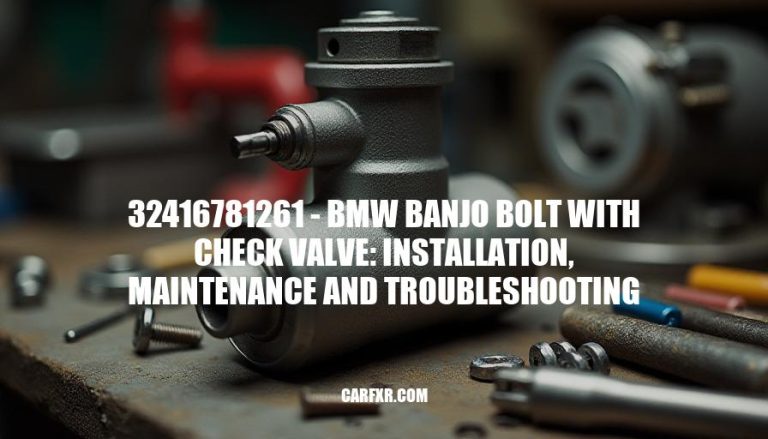
The BMW Part Banjo Bolt with Check Valve is a key part in your car’s hydraulic system. It helps keep the fluid flowing smoothly and prevents it from going back into the system. This keeps the pressure steady and makes sure everything works properly, especially the power steering.
The BMW Part banjo bolt with check valve 32416781261 is a crucial component in the hydraulic system of BMW vehicles. Here are its specific characteristics and features:
Material: The banjo bolt is made from high-quality steel, ensuring durability and resistance to wear and tear.
Dimensions: The bolt has a thread size of M14x1.5 and a length of 27.4 mm.
Check Valve: The integrated check valve prevents fluid backflow, ensuring consistent and proper fluid flow within the hydraulic system.
Application: This banjo bolt is used in various BMW models, including the E46, E60, E63, E82, and more, specifically in the power steering system.
The BMW Part banjo bolt with check valve 32416781261 plays a crucial role in maintaining the efficiency and reliability of the vehicle’s hydraulic system.


